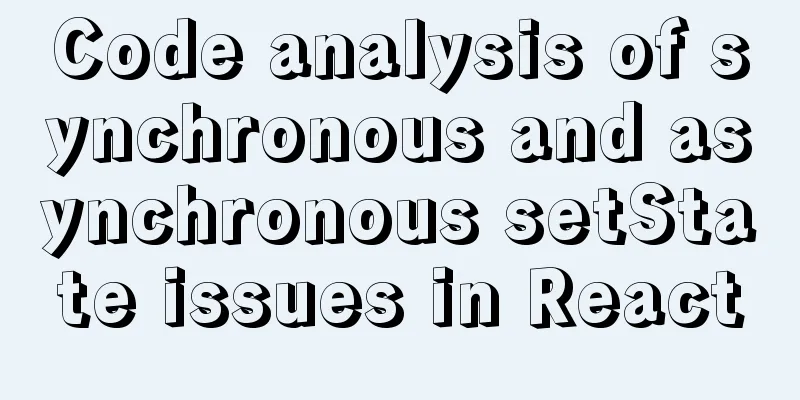In-depth explanation of iterators in ECMAScript

PrefaceWhen many junior front-end developers are moving towards intermediate levels, one of the things they are often asked about in interviews is iterators and generators. In fact, they have used them in development, but they don’t know what they are, or they have some understanding but not in depth. This article will be helpful to these developers and explain the iterator clearly. Earlier iterationsYou must know about iteration. It can be simply understood as a loop. In JavaScript, a counted loop is the simplest one. Example:
for(let i = 0; i < 9; ++i){
console.log("[ i ]", i);
}
The basis of iteration is the loop, which contains several necessary conditions:
When you need to loop through an array, the iteration is performed on an ordered collection. "Ordered" means that all elements in the array can be traversed in order from the first item to the last item. Because the array has a fixed length, and each item can be obtained by index subscript, that is to say, the entire array can be traversed by index. Example:
const arr = ["a", "b", "c"];
for(let i = 0; i < arr.length; ++i){
console.log(arr[i]);
}
However, this mode requires knowing in advance what data structure is being used, such as an array. If it is replaced with another data type or a data structure with an implicit order, the order of traversal cannot be determined. So the forEach() method was added in ES5. Example:
const arr = ["a", "b", "c"];
arr.forEach(item=>{
console.log(item);
});
This method does not need to use the same array index to traverse and obtain the value of a single item, but it cannot mark when the iteration ends, so it is only applicable to array traversal. To solve these problems, after ES6, JavaScript supports the iterator mode. Iterator PatternThe iterator pattern is a very abstract term. It can be understood as objects such as arrays or collections, whose elements are limited, independent and unambiguous. Quoting the explanation from the Little Red Book, that is:
Iterator Factory FunctionsThe iterator factory function, Symbol.iterator(), is the default property of most built-in types. It exposes the Iterable interface (iterable protocol), which means that if a data type supports iteration, then the type must support the iterable protocol. ECMAScript specifies that the default iterator exposed must use "Symbol.iterator" as the key and return a new iterator. The method to check if a default iterator property exists is also simple. Example:
const obj = {};
const arr = ["a", "b", "c"];
console.log(obj[Symbol.iterator]); // underdefined
console.log(arr[Symbol.iterator]); // f values() { [native code] }
console.log(arr[Symbol.iterator]()); // ArrayIterator {}
Of course, we don't need to explicitly call the iterator factory function in actual development. Data types that support the iterable protocol are automatically compatible with any language features that accept iterable objects. For example, when we use loops, for-of, deconstruction, and extension operators, the iterator factory function of the provided iterable object is automatically called in the background to create an iterator. Iterator ProtocolThe iterator protocol stipulates that an iterator is a one-time object. When the iterator factory function is called, a next() method is returned. This method is called for each successful iteration to obtain the value of the next iteration. If it is not called, the current position of the iteration is uncertain. The next() method returns an object containing the following attributes: done and value. done indicates whether the next() method can be called to obtain the next value, which means whether it is "exhausted". It returns a Boolean value. value indicates the next value of the iterable object. When done is true, value is underfined. When done is false, it will continue to call the next iteration. Example:
// Iterable object let arr = ['foo', 'bar']; // Iterator factory function console.log(arr[Symbol.iterator]); // f values() { [native code] }
// Iterator let iter = arr[Symbol.iterator]();
console.log(iter); // ArrayIterator{}
// Execute iteration console.log(iter.next()); // { done: false, value: 'foo' }
console.log(iter.next()); // { done: false, value: 'bar' }
console.log(iter.next()); // { done: true, value: undefined }
Final ThoughtsWith the iterator protocol, you can implement a custom iterator, such as specifying the number of times the iterator can be iterated, or terminating the iteration early. This is the end of this article about iterators in ECMAScript. For more relevant ECMAScript iterator content, please search for previous articles on 123WORDPRESS.COM or continue to browse the related articles below. I hope everyone will support 123WORDPRESS.COM in the future! |
<<: Diagram of the process of implementing direction proxy through nginx
>>: How to ensure transaction characteristics of MySQL InnoDB?
Recommend
Detailed explanation of Tomcat directory structure
Table of contents Directory Structure bin directo...
Solve the error "Can't locate ExtUtils/MakeMaker.pm in @INC"
When installing mha4mysql, the steps are roughly:...
jQuery implements shopping cart function
This article example shares the specific code of ...
MySQL index pushdown details
Table of contents 1. Leftmost prefix principle 2....
Node uses koa2 to implement a simple JWT authentication method
Introduction to JWT What is JWT The full name is ...
Pure js to achieve typewriter effect
This article example shares the specific code of ...
Practical tutorial on modifying MySQL character set
Preface: In MySQL, the system supports many chara...
Understanding of haslaylout and bfc parsing
1. haslayout and bfc are IE-specific and standard ...
Implementation steps of js object-oriented encapsulation cascading drop-down menu list
The cascading drop-down menu developed in this ex...
How to Choose the Perfect Aloe Vera Gel? Perfect Aloe Vera Gel How to Identify Authenticity and Fakeness
The latest Perfect Aloe Vera Gel packaging box ha...
How to use docker-compsoe to deploy a project with front-end and back-end separation
Say it in advance We all know that Docker can ach...
Use dockercompose to build springboot-mysql-nginx application
In the previous article, we used Docker to build ...
Vue mobile terminal realizes finger sliding effect
This article example shares the specific code for...
Simple implementation method of Linux process monitoring and automatic restart
Purpose: Under Linux, the server program may be d...
Detailed steps to install mysql in Win
This article shares the detailed steps of install...









